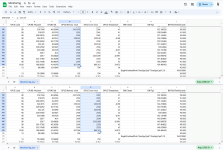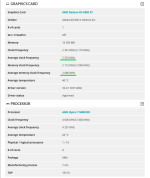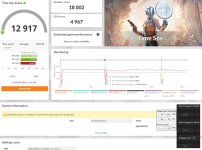RX480
Urgestein
- Mitglied seit
- Feb 13, 2020
- Beiträge
- 1.911
- Bewertungspunkte
- 899
- Punkte
- 114
No,but UL calculates the average clocks across all three tests in TS, so their reported average GFX or VRAM freq. are of little use.
in my understanding the avg. clock is GT1+2 and loadtime between GT1+2 and may be loadtime GT1 but not during CPU-Test
therefore a high minClock can have a higher avg.Clock
btw. today
"impossible" spike reading at the end of GT2
(and no, the driver didn´t crash)






